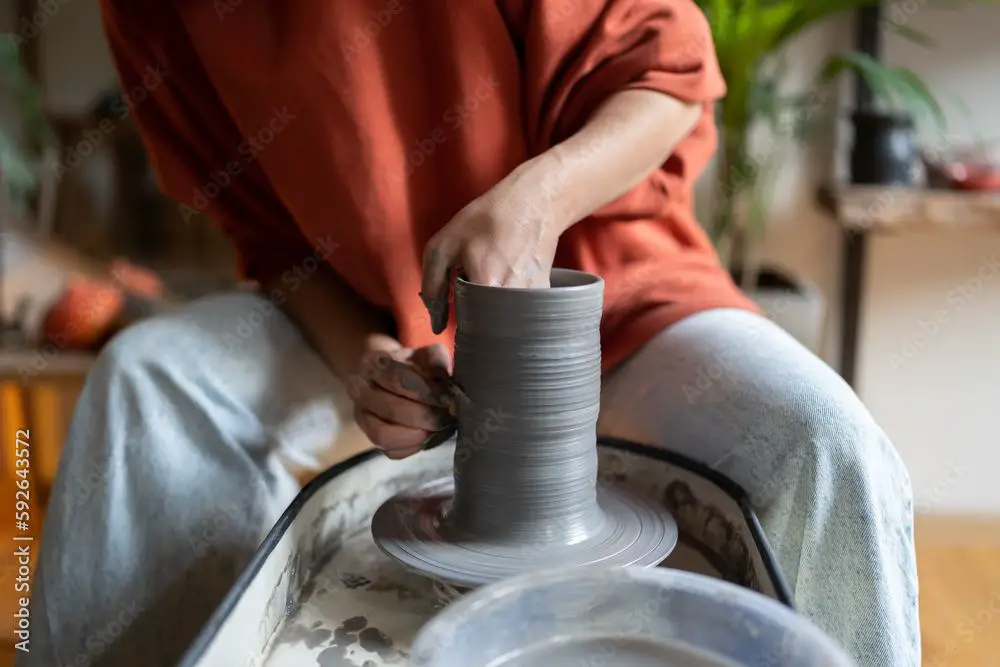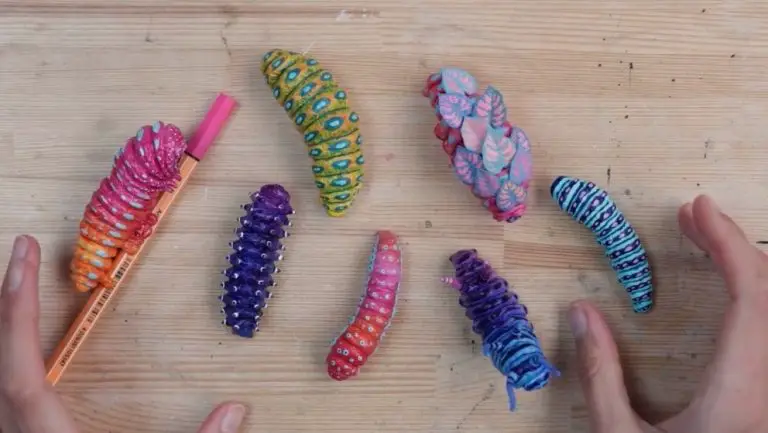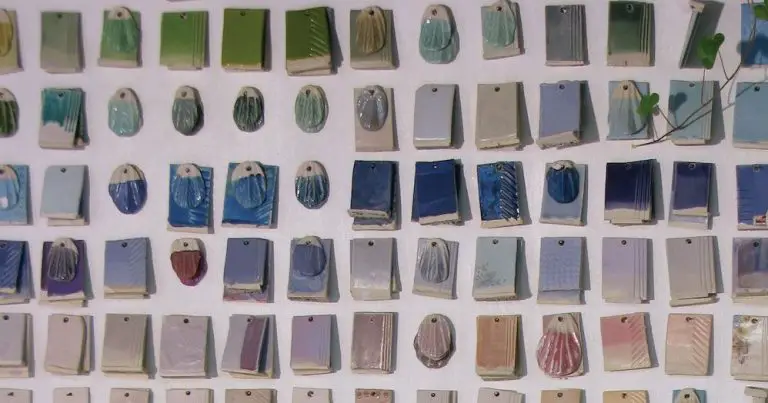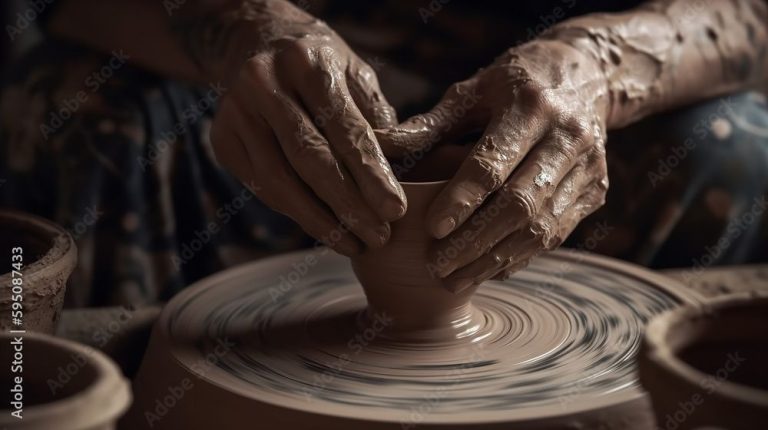What Is The Name Of The Person Who Works With Clay?
Clay is a type of fine-grained natural soil that is soft and moldable when wet, and stiff and durable when dried and fired. There are several types of clay including kaolin, ball clay, fire clay, and stoneware clay. Clay is made up of tiny particles of decomposed rocks and minerals. It has plasticity properties that allow it to be molded, shaped, and sculpted. When clay is fired at high temperatures in a kiln, the clay permanently hardens through a process known as sintering. This transforms it into a ceramic material.
The art of working with clay to create pottery, ceramics, and sculptures has existed for thousands of years, with the earliest known clay artifacts dating back to 24,000 BC. Clay is an attractive artistic medium because of its availability, affordability, workability, and versatility. Clay can be molded into endless forms and expressive designs. The history of civilization has largely paralleled the discovery and use of clay. Clay objects reflect the time period and culture in which they were created and provide archaeologists insights into ancient life.
Pottery
Pottery is one of the oldest and most widespread artforms in human history. Pottery refers to functional and decorative objects made out of clay and ceramic materials which are shaped while wet and then hardened by heating at high temperatures. Some of the earliest known pottery dates back over 20,000 years to ancient China and Japan https://learn.podium.school/art/pottery-art/. Over the centuries, pottery developed across cultures for cooking, storage, and serving food, as well as religious and artistic expression.
There are several main types of pottery defined by the clay composition and firing method:
- Earthenware – Made of natural clay fired at lower temperatures. It is porous and heavier.
- Stoneware – Denser clay fired at high temperatures. Less porous than earthenware.
- Porcelain – Pure white clay fired at extreme high temperatures. Translucent and hard.
- Terracotta – Orange colored earthenware often used for sculpture.
Throughout history pottery has served essential practical functions for storing food and water. Over time it evolved into an artform for making decorative or sculptural works. Ancient cultures like the Greeks, Romans, Chinese, and Mayans produced elegant pottery vessels with intricate painted designs. Native American cultures like the Anasazi and Hopi peoples of the American Southwest developed their own unique styles of painted earthenware pots and vessels.
Sculpting
Clay sculpting is an ancient artform that has been practiced for thousands of years across many cultures. Sculptors use clay as a medium to create three-dimensional works of art. Some of the most famous clay sculptures include the Terracotta Army in China, the Venus of Willendorf from the Stone Age, and Michelangelo’s David and Pieta sculptures.
There are several techniques used in clay sculpting. Sculptors may model the clay by hand or use basic tools like loop tools, ribs, and knives. The clay can be built up solid or over an armature for support. Details can be carved out of the clay or added onto the surface. Clay sculpting often involves an iterative process of adding and removing clay to achieve the desired form.
Some well-known clay sculptors include Edgar Degas, Camille Claudel, and Malvina Hoffman. Contemporary sculptors like Viola Frey and Judy Fox have pushed the boundaries of large-scale ceramic sculpture. Overall, clay remains a popular medium for artistic expression across a range of styles and genres. The tactile nature of clay and its ability to capture fine detail make it a unique material for sculptors through the ages.
Ceramics
Ceramics are inorganic, non-metallic materials that are hardened when subjected to high temperatures. They are compounds formed between metallic and non-metallic elements such as aluminum, silicon, oxygen, and nitrogen. Ceramics have crystalline structures and are porous. They are brittle, hard, strong in compression, and weak in shearing and tension.
The history of ceramic art dates back thousands of years with the oldest known pottery vessels found in China and Japan dating back to 18,000-17,000 BCE. In the Neolithic period, humans discovered that clay could be dug up and formed into objects by first mixing it with water and then firing it in a kiln. Early ceramics were made to store food and liquids and also for religious and ceremonial purposes. Ceramic art flourished in ancient Mesopotamia, Egypt, Persia, and Greece where pottery vessels were decorated with images of gods, goddesses, animals, and geometric patterns.
The key differences between pottery and ceramics are that all pottery is ceramic, but not all ceramics are pottery. Pottery refers specifically to ceramic materials that have been shaped by the potter’s wheel and fired. Ceramics encompasses pottery as well as all other objects made out of clay bodies and fired.
Porcelain
Porcelain is a type of pottery and ceramic material made from kaolin clay that is heated at very high temperatures. Unlike regular pottery, porcelain is white, translucent and very delicate. The ingredients for porcelain were first brought together in China during the Tang Dynasty (618–907), under the reign of Empress Wu Zetian. By the time of the Song Dynasty (960-1279 AD), porcelain production methods had been refined and porcelain was being exported to the Islamic world and Middle East.[1]
The key difference between porcelain and regular pottery is that porcelain contains kaolin clay and is fired at very high temperatures above 1,200°C (2,192°F). This makes porcelain less porous than earthenware and stoneware. Porcelain is also thinner and finer than pottery, giving it a glass-like quality. The smooth surface means porcelain requires less glazing than pottery.[2]
Some of the most famous porcelain artworks include vases and plates from the Ming Dynasty, delicate figurines from 18th century Germany and France, and intricate hand-painted designs from the Qing Dynasty in China.
Clay Workers
A clay worker is someone who works with clay to create functional pottery or artistic sculptures and decorations. They may go by various other names, such as:
- Potter – Someone who specifically makes pottery such as bowls, mugs, and vases on a potter’s wheel.
- Ceramist – A more general term for someone who works with ceramic clay to make both pottery and sculpture.
- Sculptor – An artist who sculpts shapes and figures out of clay. Sculptors may fire their works to create ceramic sculptures or work with non-fired clay.
Clay workers utilize natural clays or ceramic mixtures to handcraft items that are both beautiful and useful. Their artistic medium requires specific skills such as throwing vessels on a potter’s wheel, hand-building techniques like coil and slab construction, knowledge of glazes and firing procedures, and creative artistry.
Potter
A potter is an artisan who specializes in creating pottery and ceramics using clay as their primary medium (https://www.careerexplorer.com/careers/potter/). Potters shape, mold, design, and decorate functional and decorative pieces made out of clay and ceramics.

Potters require a diverse set of skills and techniques to work with clay. These include:
- Knowledge of different types of clay and how to prepare them for use
- Wheel throwing skills to shape clay vessels on a pottery wheel
- Handbuilding techniques like coil building, slab construction, and pinch pots
- Understanding of glazes, slips, and other methods to decorate finished pieces
- Sculpting and modeling expertise to craft figurines, busts, tiles, or other ceramic artwork
- Understanding of the firing process including loading and unloading kilns
Potters combine their knowledge of clay, glazes, and firing with their creativity to produce one-of-a-kind as well as production pieces of pottery and ceramic artwork (https://thepotterywheel.com/what-does-a-potter-do/).
Ceramist
A ceramist is an artist who works with ceramics, which is clay that has been permanently hardened through high temperature firing in a kiln. Ceramists create both functional and decorative objects out of clay using a variety of techniques.
Some of the types of ceramic arts that a ceramist may work in include:
- Pottery – Making bowls, cups, plates, vases, and other functional vessels out of clay.
- Sculpture – Creating three-dimensional ceramic sculptures and figurines.
- Tile/mosaic – Designing and producing ceramic tiles that can be arranged into murals or other patterns.
- Terracotta – Working with natural reddish-brown clay to make items like flower pots and roof tiles.
- Porcelain – Crafting delicate objets d’art out of refined white clay.
Ceramists require artistic talent as well as technical skills in working with clay. Their creations may be purely decorative or functional works of art.
Sculptor
A sculptor is an artist who creates sculptures using materials like clay, metal, stone, or wood. Sculptors employ various techniques to shape their chosen medium into a three-dimensional work of art. Clay is one of the most popular and versatile materials used by sculptors.
There are many famous clay sculptors throughout history who helped advance and popularize the artform. Some well-known names include:
Auguste Rodin (1840–1917) – One of the most influential sculptors ever, Rodin created iconic masterpieces like The Thinker and The Kiss using clay models and the lost-wax casting process. He helped elevate the status of sculpture to rival painting in importance.
Edgar Degas (1834-1917) – Though better known as a painter, Degas also worked extensively with sculpture in wax, clay and bronze. His clay models explored themes of dance and movement.
Louise Nevelson (1899-1988) – An American sculptor who created groundbreaking abstract assembled sculptures from found objects and discarded wood pieces. She also worked in clay and pioneered monochromatic white-painted sculptures.
Isamu Noguchi (1904-1988) – Noguchi was an American sculptor known for combining modernist and Asian influences in his biomorphic, organic sculptures. He worked in a variety of mediums including clay, marble, and metal.
Donatello (1386-1466) – One of the seminal sculptors of the Renaissance, Donatello revived classical techniques like contrapposto and helped elevate sculpture to a fine artform. He created some of his most notable works in clay, bronze, and marble.
As these and other renowned sculptors demonstrate, clay is a pivotal material that allows artists to render their creative visions in three dimensions. The tactile nature of clay and its ability to capture fine details and textures make it a favored choice of sculptors across history.
Conclusion
Clay art has a rich and vibrant history spanning many centuries. From early pottery and figurines crafted by ancient civilizations to the proliferation of porcelain in Asia to contemporary ceramic sculpture, working with clay as an artistic medium has remained an important cultural practice. The categories of pottery, sculpting, ceramics, and porcelain encompass a wide range of clay artforms, each with their own artistic heritage.
Clay artists known as potters, ceramicists, and sculptors all contribute to the enduring popularity of clay as an art material. Their creativity, skill, and vision allow clay to be shaped into both functional and purely decorative objects that reflect the times and cultures in which they were produced. From ancient artifacts that provide insights into prehistoric peoples to avant-garde works that push the boundaries of contemporary art, clay creations mark our humanity’s desire for beauty and self-expression.
The tactile nature of clay and its accessibility as an art material contribute to its timeless appeal. Clay connects us to our past while also providing a medium for innovation and cultural commentary. As technology evolves, the fundamental human impulse to mold, shape, and create meaning from clay endures. Whether honoring tradition or pioneering new approaches, clay artists ensure the continued relevance and importance of this elemental artform.




